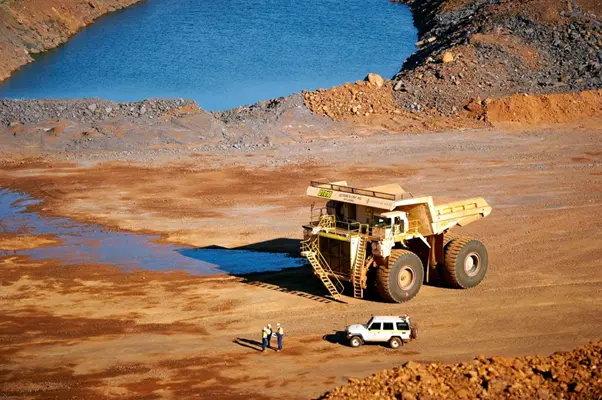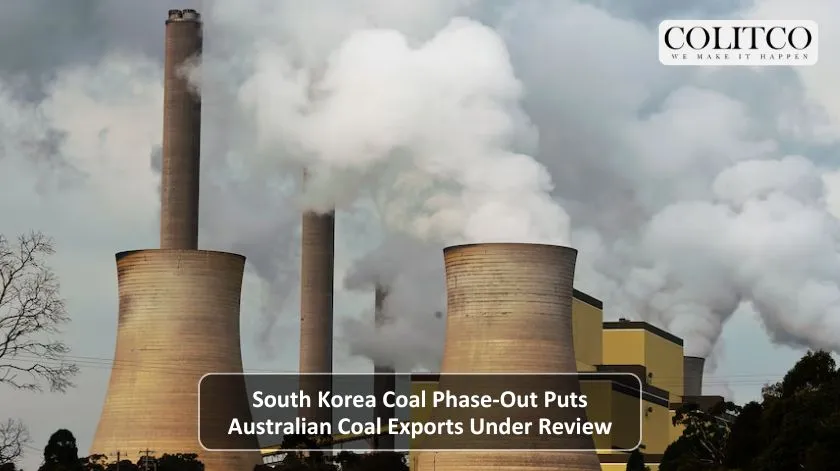Australian coal exports are now under renewed attention after South Korea confirmed that all coal-fired power stations will close by 2040. The policy moves the country into a formal commitment to end the use of unabated coal generation within its energy system. The decision came as South Korea joined the Powering Past Coal Alliance, placing it among nations that have pledged to move away from coal.

The announcement matters because South Korea is one of the world’s largest thermal coal importers. Its purchase volumes contribute to global trade flows and maintain a long-standing supply relationship with Australia. With the new policy, the structure of demand is set to change as the country progresses toward cleaner energy sources.
South Korea’s coal phase-out and its timeline
South Korea’s plan will cover all 61 coal-fired units currently supplying a substantial portion of its power. The government has already confirmed closure schedules for 40 units. The remaining units are expected to receive formal closure dates as national reviews continue. Authorities explained that the transition will consider grid needs and available alternatives before finalising the full list.
The decision will not take effect immediately, but the direction of the transition is clear. South Korea intends to reduce reliance on coal steadily over the next decade before the final shutdown in 2040. This staged timeline reduces the risk of sudden supply disruptions and allows space for renewable and gas-based capacity to expand.
Thermal coal demand decline and potential market adjustments
The decline in thermal coal demand in South Korea is expected as the phase-out plan progresses. This shift may adjust trade patterns because the country currently accounts for around 8 per cent of global thermal coal trade. Australian coal exports form a portion of this supply, and the transition may narrow that relationship over time.

Market observers note that South Korea’s shift is not driven by a short-term trend but by structural changes in energy policy. Demand for thermal coal is therefore likely to taper as plants close and renewable generation takes a larger share of the electricity mix. This broader movement may create new patterns across Asia’s coal markets.
Australian coal exports and evolving trade conditions
Australian coal exports to South Korea are valued in the billions each year. These shipments support a long-standing commercial connection that has operated for decades. With the new policy direction, exporters may need to assess how the South Korean market will evolve over the coming years as plants are retired.

Australian coal exports may adjust as major trading partners revise long-term energy strategies
Australia’s Treasury modelling, referenced in public reporting, has already mapped potential declines in fossil-fuel export revenue. The modelling suggests that export values for coal and gas could fall during the next five years as overseas markets change their energy mix. South Korea’s new timetable reinforces these expectations.
Reactions from analysts and domestic stakeholders
Energy analysts see the South Korean decision as part of a broader trend among major Asian economies. These changes reflect a wider push for lower-emission power sources and greater energy security. With this trend growing, Australian coal exports may increasingly depend on shifts in international policy rather than domestic decisions.
Domestic stakeholders say markets are adjusting faster than many had forecast. The pace of plant closures in South Korea adds to earlier plans announced by other countries in the region. As a result, exporters are watching policy settings closely as trading relationships adapt to new conditions.
Ongoing transition in South Korea’s power sector
The move toward a coal-free electricity sector is part of South Korea’s wider energy transition program. Investments are being directed towards renewables, storage, and advanced grid management. Authorities describe the pivot as necessary for meeting long-term energy and climate goals while maintaining a reliable supply for households and industry.

As more renewable projects enter the system, coal plants will retire in stages. The government noted that each closure decision will be based on national energy needs, market conditions, and consultation with operators. This method reduces uncertainty and ensures a managed shift toward new technologies.
Also Read: Stockland Announces New Masterplanned Communities Strategy Aimed at Boosting Settlement Growth
Final thoughts
Australian coal exports remain central to current trade relationships, but South Korea’s structured move away from coal presents a clear change in the long-term outlook. The South Korea coal phase-out creates a pathway toward reduced reliance on imported thermal coal, which may influence trade volumes through the next decade. As the decline in thermal coal demand continues across key markets, exporters will monitor developments and assess how global energy transitions shape future opportunities.
FAQs
- What is South Korea’s coal phase-out plan?
South Korea has confirmed that all coal-fired power stations will close by 2040 as part of a national transition toward cleaner energy sources. The plan includes the staged retirement of existing units and the end of unabated coal generation.
- How does South Korea’s decision affect Australian coal exports?
The long-term decline in South Korea’s coal use may narrow demand for Australian thermal coal. South Korea is a major customer, and reduced coal-fired generation could change export volumes over time.
- Why is South Korea reducing its reliance on coal?
The government is shifting to renewables, storage technologies, and alternative power sources to meet national energy targets and modernise its electricity sector.
- How many coal plants does South Korea currently operate?
South Korea operates 61 coal-fired units. Forty have already confirmed closure schedules, and the remainder are expected to be assigned retirement timelines during ongoing reviews.
- What role does Australia currently play in South Korea’s coal supply?
Australia supplies a share of South Korea’s thermal coal imports, forming part of a long-standing trade relationship between the two countries.
- Will thermal coal demand decline continue in Asia?
Public reporting indicates that several Asian markets are updating energy strategies, which could affect regional demand for thermal coal over the next decade.
- What alternatives is South Korea using as coal plants close?
South Korea is expanding the use of renewable power, gas-based generation, energy storage, and grid management technologies to support the transition.
- How soon will Australian coal exporters see changes?
Market adjustments will occur gradually as South Korea retires its coal units in stages. The pace of change will depend on plant closures and national energy needs.












